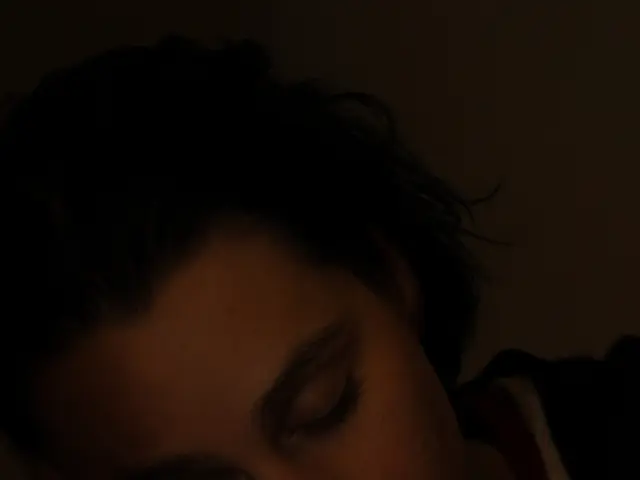Deep Learning's Potential Role in Revolutionizing Heart Failure Prevention Strategies
Alright, let's dive into the heart of the matter: Old man Aristotle thought the heart was the kingpin of the body, and while he was close, he wasn't quite there. Today, we know the heart has four chambers, with the brain calling the shots, but it's still the engines that keep our bodily machinery running. A heart condition like heart failure, though, can make that engine sputter, struggling to supply the right amount of gas to the rest of the body.
Enter MIT and Harvard Medical School, who've got a cunning plan to detect these issues earlier: a darn clever deep learning approach that examines electrocardiogram (ECG) signals to identify the signs of heart failure lurking in the shadows. And guess what? Their technology is showing results similar to the gold standard, but without the invasiveness.
This ain't news for Collin Stultz, the paper’s senior author, and director of the Harvard-MIT Program in Health Sciences and Technology. Stultz has been shouting this from the rooftops for a while, and this is just the latest in a series of his ventures in this domain.
The human heart works like a well-oiled machine, right? Two pumps - the atria and the ventricles - working together, sending blood to the right places. But when the pressure starts building up in the left atrium, the whole show goes south. More pressure means more pulmonary symptoms, and shortness of breath soon follows.
Typically, doctors are left with just a few unreliable tools to measure left atrial pressure: weight, blood pressure, and heart rate. To quote Stultz, "one-in-four heart failure patients is readmitted to the hospital within 30 days." That's why Stultz and his pals propose a Cardiac Hemodynamic AI monitoring System (CHAIS), a deep neural network that can analyze ECG data from a single lead, requiring a simple stick-on patch at most.
So how does it stack up against the current gold standard – right heart catheterization (RHC)? Well, when you're an inch away from the RHC procedure, the CHAIS measurement is already nearly as accurate.
Aaron Aguirre SM '03, PhD '08, a cardiologist and critical care physician at MGH agrees: the ability to estimate left atrial pressure noninvasively is a game-changer. He sees the potential for CHAIS not only to improve patient care but also to help doctors pick the right patients for more invasive testing and to monitor patients with heart issues over time.
And it's not just about improving care for the few. With a huge medical workforce already strapped for time, technology like CHAIS can help make healthcare more accessible, delivering top-notch care to anyone, no matter where they live or their social status.
Stultz and his gang are currently conducting another clinical trial to gather more data and refine their technology. It's part of Stultz's mission to change the world, one biomedical breakthrough at a time. And if it works out, patient care stands to benefit greatly. Here's looking at you, heart disease.
- In the realm of research, scientists are exploring the use of artificial intelligence in medicine, specifically for detecting heart conditions earlier.
- The collaboration between MIT and Harvard Medical School has developed a deep learning approach that studies electrocardiogram (ECG) signals to identify signs of heart failure.
- College Stultz, the paper's senior author and the director of the Harvard-MIT Program in Health Sciences and Technology, believes this technology could revolutionize cardiovascular health care.
- Heart failure can be a serious medical-condition that can cause an individual's engine, or in this case, their heart, to sputter and struggle in supplying the right amount of blood to their body.
- Traditional methods for measuring left atrial pressure, such as weight, blood pressure, and heart rate, are often unreliable, leading to frequent readmissions of heart failure patients to the hospital.
- Stultz and his team have proposed a solution called the Cardiac Hemodynamic AI monitoring System (CHAIS), a deep neural network that can analyze ECG data from a single lead, requiring just a simple stick-on patch.
- The accuracy of the CHAIS measurement is almost on par with the current gold standard, right heart catheterization (RHC), making it a game-changer in the field of health-and-wellness, fitness-and-exercise, and cardiovascular-health.
- Cardiologist and critical care physician, Aaron Aguirre SM '03, PhD '08, agrees that the ability to estimate left atrial pressure noninvasively could improve patient care and help doctors make informed decisions about invasive testing.
- With the potential benefits this technology brings, it could make healthcare more accessible to the public and ensure that quality care is available for everyone, regardless of their social status or geographical location.
- Stultz and his team are currently conducting another clinical trial to refine the CHAIS technology and gather more data, furthering their mission to create medical breakthroughs and positively impact heart disease patients worldwide.




